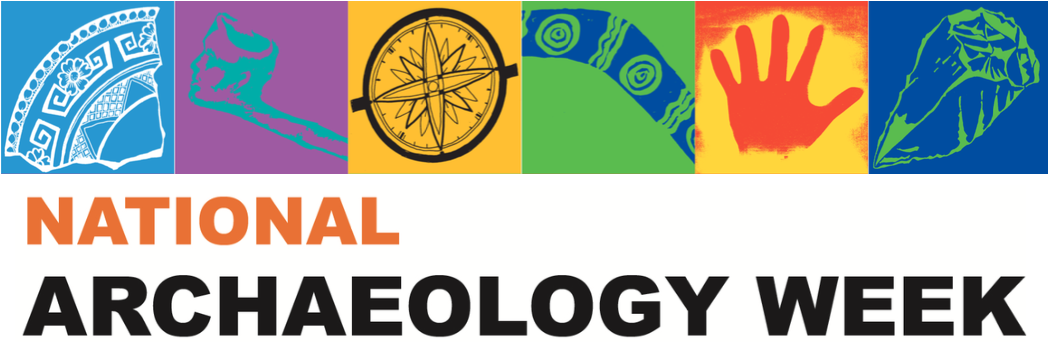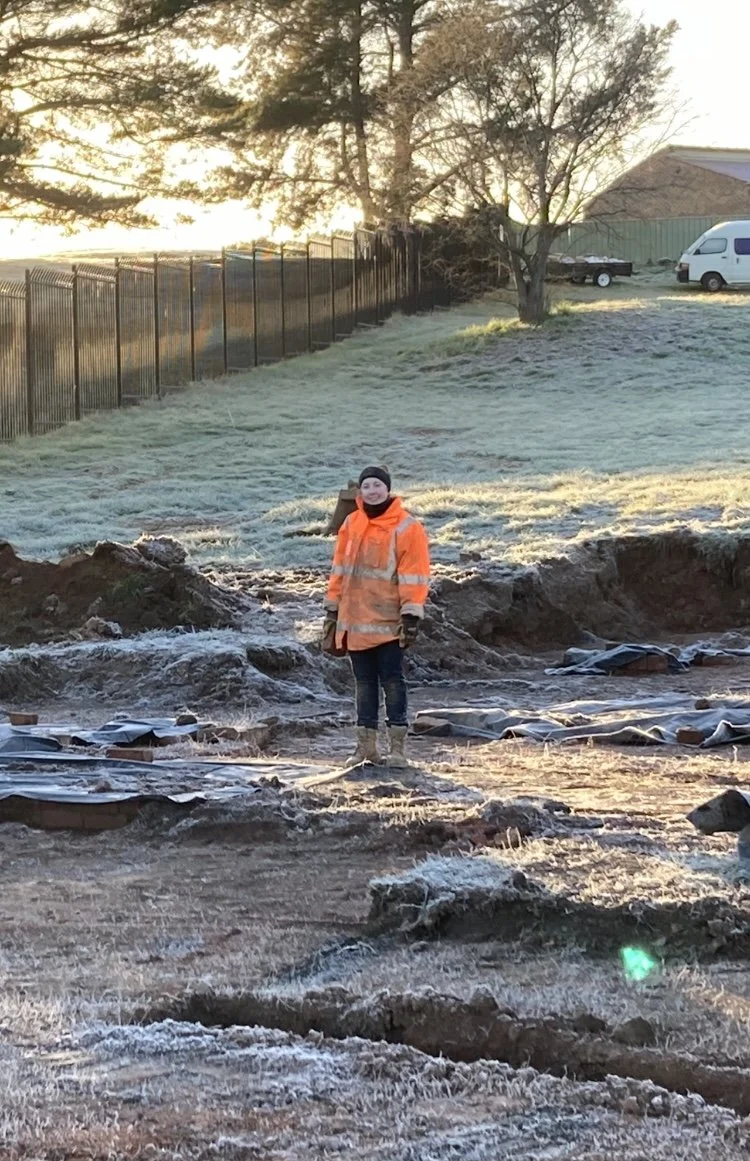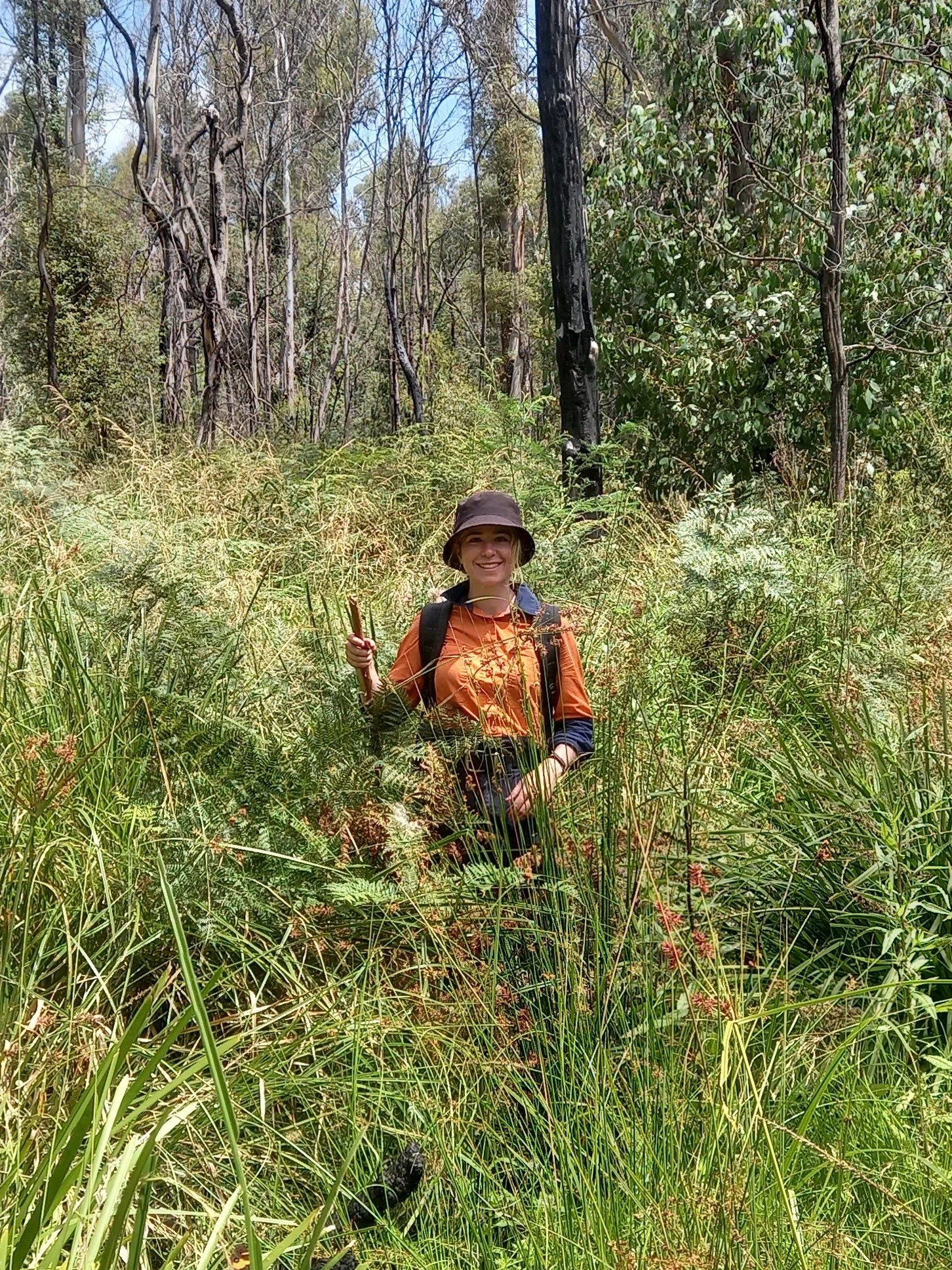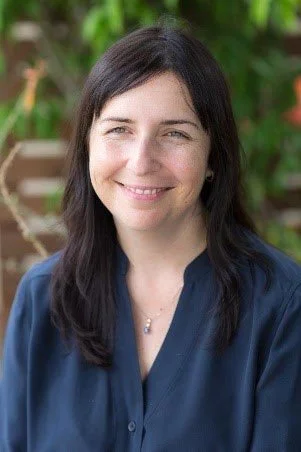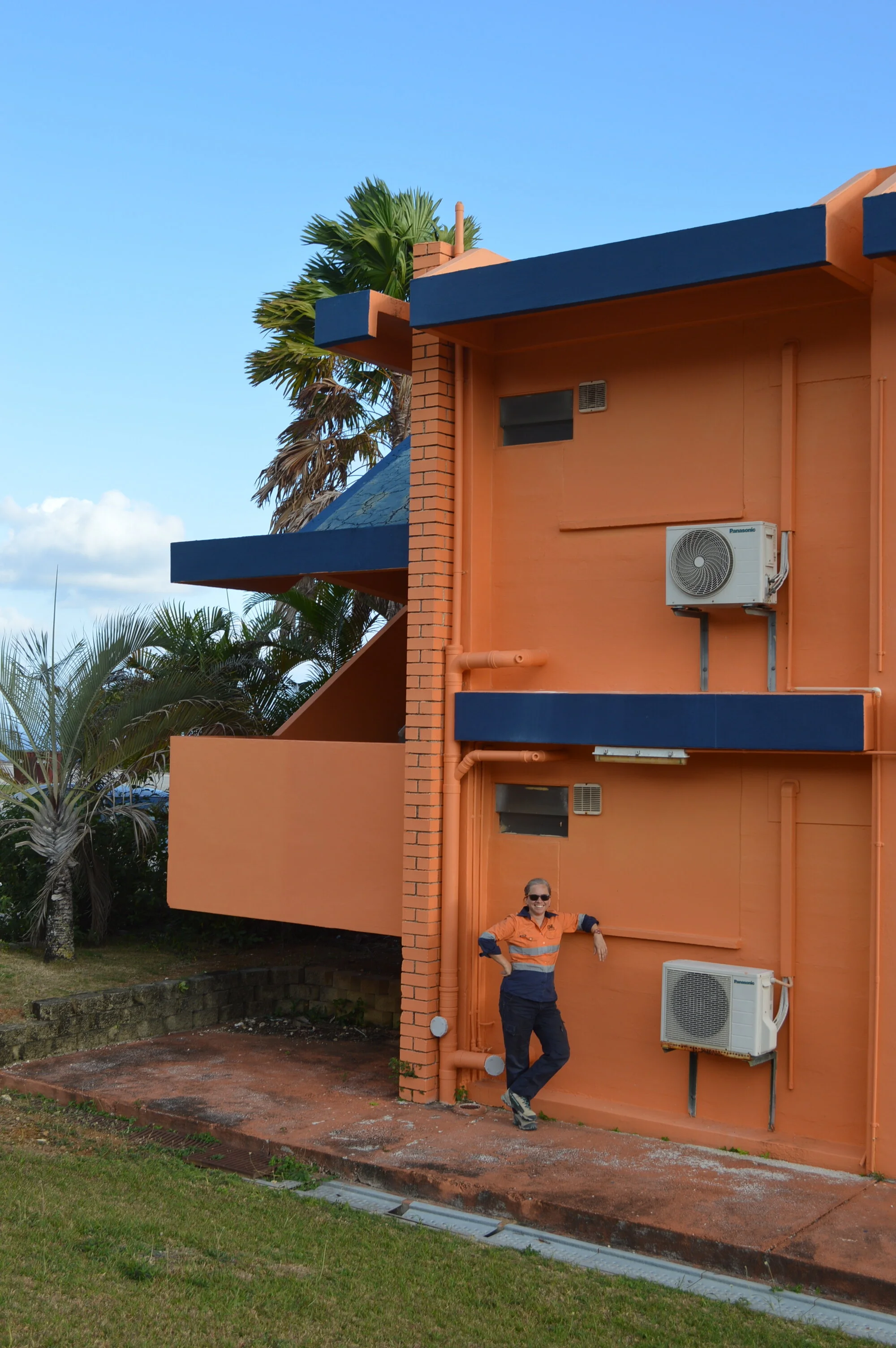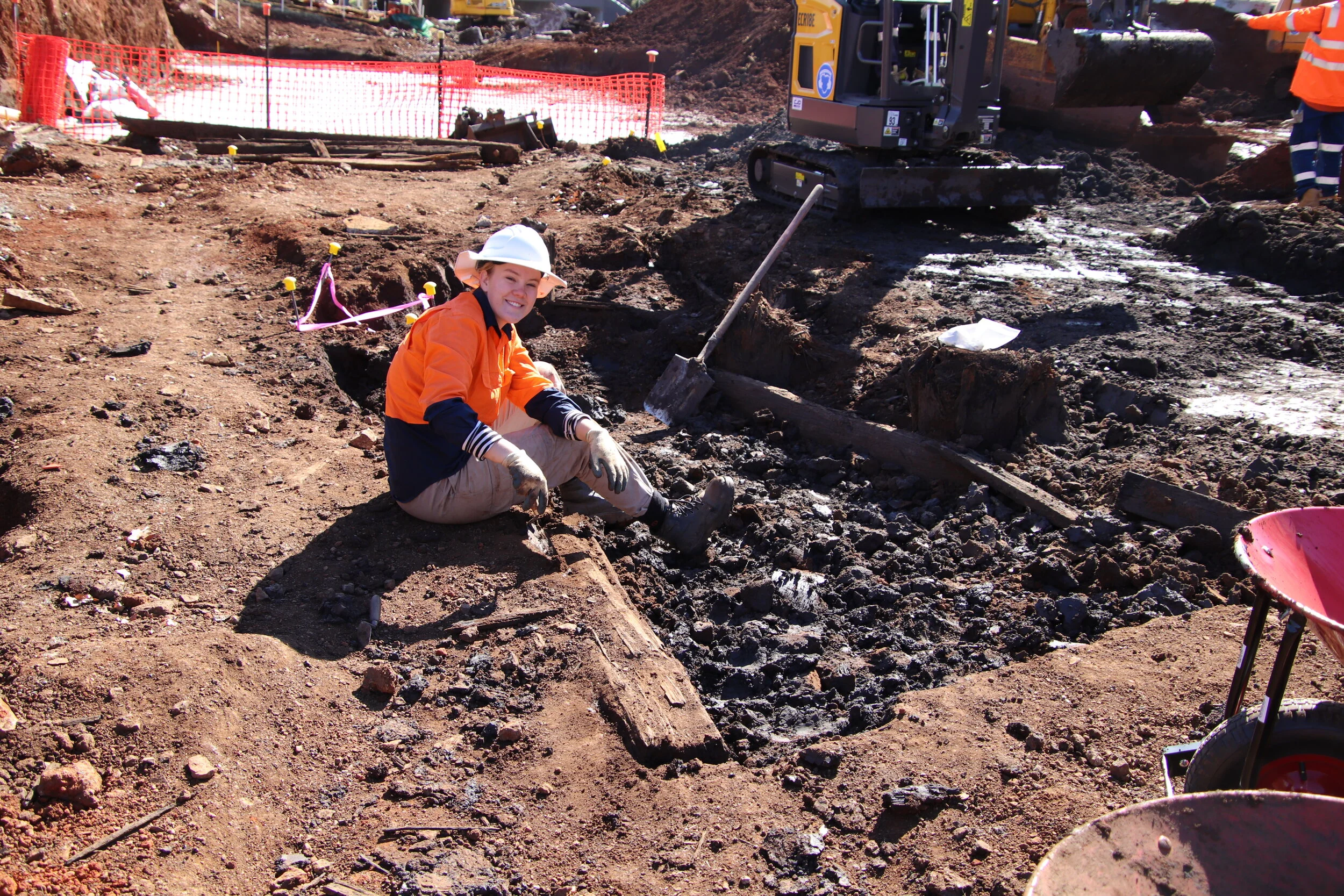Sally is a palaeontologist AND an archaeologist [this is not helping Sally], and she has created a website that provides you with information about what to do if you ever discover an Indigenous artefact, or a fossil! Jump onto Sally’s website Found a Fossil to find out more.
Read MoreLeah’s archaeological career is part of a broader concern for her cultural heritage, inherited from her Ancestors through her grandmother and mother. But without neglecting valuable practical lessons from her uncle, about the dangers of falling into trenches and standing in ants nests.
Read MoreCaitlin chose archaeology as a career, looking for a practical application for her passion for history. In her first week on the job, she found herself down an old abandoned flue - wet, dark, claustrophobic and smelly. Fortunately it wasn’t glamour she was looking for.
Read MoreElise explains how every archaeological discovery is interesting, right from the small ‘boring’ things to the big shiny things. Every little element has a part to play in creating the story.
Read MoreIldikë followed her love of adventure, history and the outdoors to archaeology! She is now working on diverse projects right across the country, and still loves the travel and discovery, plus going behind the scenes on site.
Read MoreWhen Karyn was a kid, her sister set up a science lab in her room, complete with a small sandpit that she had buried some toys in. Once her spoon-shovel hit that sand she knew that she would become an archaeologist one day!
Read MoreA love of history and cultures, as well as being outdoors, started Shari on an archaeological career that so far has taken her across Australia and beyond, to England, Germany, Egypt, and Kosovo.
Read MoreMichelle’s current research includes exploring the use of hard animal materials such as bone, teeth, antler, ivory, and shell in creating tools and ornaments by communities around the globe over the past 100,000 years. She has had the privilege of studying many of the oldest pieces of personal ornamentation found in our region.
Read MoreOne of many recruited to archaeology by Professor Indiana Jones, Donna’s current research involves building 3D computer models of early Christian churches to understand how ancient people used these ritual spaces.
Read MoreA career in archaeology was the inevitable outcome of combining childhood interests in murder mysteries with Cairo Jim and Neptune Flannelbottom Bone. Stephanie is now channelling her enthusiasm into research into the Iron Age of southeast Arabia.
Read MoreIn her work as an archaeologist, Angeline has the opportunity to help people reclaim their own history, and experience moments where she is the first person in the world to see an individual who had been lost to history for millions of years. What amazing experiences!
Read MoreMarc dreamed of being an archaeologist as a child, but got a sensible job instead and has equally sensibly come back to the field in later life. His current research sheds a fascinating light on information that can be extracted from analysis of sediment, from site formation in Indonesia to the impact of a comet on Earth thousands of years ago.
Read MoreArchaeological Hazards 101 does not include ‘getting chased by a hermit’ but maybe it really should. Fortunately Mary-Jean was able to out-hermit the hermit.
Read MoreFrom an early childhood interest in everything in the world, Jelena has developed an interest in everything in the universe, leading her to the contemporary field of space archaeology! Her current research is focused on the study of material culture related to food and eating aboard the International Space Station.
Read MorePaul’s interest in archaeology was sparked by exploring his grandparents’ library (and jewellery collection). He studied in NSW and is now working in Alaska!
Read MoreSophie is an historical archaeologist, at the moment working on writing up a recent excavation in Parramatta. Her story as an archaeologist is punctuated by vivid memories and experiences, from the Big Oyster in Taree to a timber spindle in London.
Read MoreOne of Jacqueline’s passions is diseases in the archaeological record, burials, misinformation on diseases and historic quarantine. She also adds bull calves to the long list of fieldwork hazards.
Read MoreAs an archaeologist, Katarina loves having an outdoor and an indoor office. It’s not everyone who finds two perfectly preserved Roman boats in their outdoor office though …
Read MoreAbby took a gamble and applied for archaeology at university. Since then, she says she has learnt so much from so many different subfields of the discipline; from what gives glass its colour, to the effect of sea level rise on Aboriginal cultural heritage sites.
Read MoreEmily introduces us to spatial syntax, a concept that can be used to understand patterns of movement and encounter. it’s a fascinating insight into one of the many ways that archaeologists find meaning in material culture.
Read More